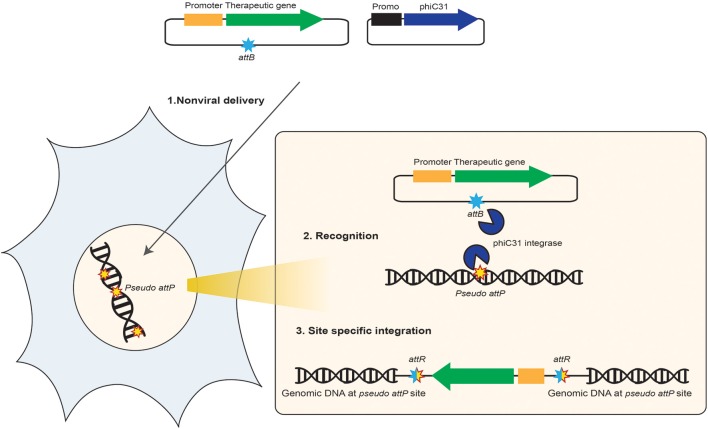Figure 3.
Schematic representation of the non-viral integrase-mediated site-specific gene therapy. This diagram shows how ΦC31 integrase system benefits in gene therapy. (1) One DNA vector that carries the desired therapeutic transgene expression cargo (promoter, transgene, reporter gene, polyA signal) and also the attB site that is recognized by ΦC31 integrase enzyme and one DNA vector that carries the integrase encoding gene are co-delivered to human target cells. Both DNA vectors enter nucleus, the integrase is produced in the cytoplasm and redirected to the nucleus. (2) ΦC31 integrase enzyme binds as a dimer to the attB site on the therapeutic DNA vector and bounds at pseudo attP sites present in the human genome. (3) A cut-and-paste recombination reaction occurs at the site of integration, which results in the insertion of the therapeutic transgene expression cargo into the chromosome of human cells at the pseudo attP site. This process provides long-term expression of the transgene and production of therapeutic protein in the desired target cells.

